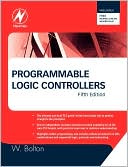Engineering Genetic Circuits
An Introduction to Systems Bioengineering\ Takes a Clear and Systematic Engineering Approach to Systems Biology\ Focusing on genetic regulatory networks, Engineering Genetic Circuits presents the modeling, analysis, and design methods for systems biology. It discusses how to examine experimental data to learn about mathematical models, develop efficient abstraction and simulation methods to analyze these models, and use analytical methods to guide the design of new circuits.\ After reviewing...
Search in google:
An Introduction to Systems BioengineeringTakes a Clear and Systematic Engineering Approach to Systems BiologyFocusing on genetic regulatory networks, Engineering Genetic Circuits presents the modeling, analysis, and design methods for systems biology. It discusses how to examine experimental data to learn about mathematical models, develop efficient abstraction and simulation methods to analyze these models, and use analytical methods to guide the design of new circuits.After reviewing the basic molecular biology and biochemistry principles needed to understand genetic circuits, the book describes modern experimental techniques and methods for discovering genetic circuit models from the data generated by experiments. The next four chapters present state-of-the-art methods for analyzing these genetic circuit models. The final chapter explores how researchers are beginning to use analytical methods to design synthetic genetic circuits.This text clearly shows how the success of systems biology depends on collaborations between engineers and biologists. From biomolecular observations to mathematical models to circuit design, it provides essential information on genetic circuits and engineering techniques that can be used to study biological systems.
List of Figures xiiiList of Tables xviiForeword xixPreface xxiiiAcknowledgments xxvii1 An Engineer's Guide to Genetic Circuits1.1 Chemical Reactions 11.2 Macromolecules 41.3 Genomes 81.4 Cells and Their Structure 91.5 Genetic Circuits 131.6 Viruses 161.7 Phage λ: A Simple Genetic Circuit 171.7.1 A Genetic Switch 191.7.2 Recognition of Operators and Promoters 261.7.3 The Complete Circuit 291.7.4 Genetic Circuit Models 351.7.5 Why Study Phage λ? 361.8 Sources 39Problems 40Appendix 432 Learning Models 512.1 Experimental Methods 522.2 Experimental Data 572.3 Cluster Analysis 592.4 Learning Bayesian Networks 622.5 Learning Causal Networks 682.6 Experimental Design 792.7 Sources 80Problems 813 Differential Equation Analysis 853.1 A Classical Chemical Kinetic Model 863.2 Differential Equation Simulation 883.3 Qualitative ODE Analysis 923.4 Spatial Methods 973.5 Sources 98Problems 994 Stochastic Analysis 1034.1 A Stochastic Chemical Kinetic Model 1044.2 The Chemical Master Equation 1064.3 Gillespie's Stochastic Simulation Algorithm 1074.4 Gibson/Bruck's Next Reaction Method 1114.5 Tau-Leaping 1154.6 Relationship to Reaction Rate Equations 1174.7 Stochastic Petri-Nets 1194.8 Phage λ Decision Circuit Example 1204.9 Spatial Gillespie 1244.10 Sources 127Problems 1275 Reaction-Based Abstraction 1315.1 Irrelevant Node Elimination 1325.2 Enzymatic Approximations 1335.3 Operator Site Reduction 1365.4 Statistical Thermodynamical Model 1455.5 Dimerization Reduction 1515.6 Phage λ Decision Circuit Example1535.7 Stoichiometry Amplification 1545.8 Sources 154Problems 1576 Logical Abstraction 1616.1 Logical Encoding 1636.2 Piecewise Models 1656.3 Stochastic Finite-State Machines 1706.4 Markov Chain Analysis 1746.5 Qualitative Logical Models 1806.6 Sources 184Problems 1857 Genetic Circuit Design 1877.1 Assembly of Genetic Circuits 1887.2 Combinational Logic Gates 1897.3 PoPS Gates 1987.4 Sequential Logic Circuits 1987.5 Future Challenges 2117.6 Sources 212Problems 213Solutions to Selected Problems 215References 237Glossary 247Index 273








